Audi 2012 Annual Report Download - page 155
Download and view the complete annual report
Please find page 155 of the 2012 Audi annual report below. You can navigate through the pages in the report by either clicking on the pages listed below, or by using the keyword search tool below to find specific information within the annual report.-
 1
1 -
 2
2 -
 3
3 -
 4
4 -
 5
5 -
 6
6 -
 7
7 -
 8
8 -
 9
9 -
 10
10 -
 11
11 -
 12
12 -
 13
13 -
 14
14 -
 15
15 -
 16
16 -
 17
17 -
 18
18 -
 19
19 -
 20
20 -
 21
21 -
 22
22 -
 23
23 -
 24
24 -
 25
25 -
 26
26 -
 27
27 -
 28
28 -
 29
29 -
 30
30 -
 31
31 -
 32
32 -
 33
33 -
 34
34 -
 35
35 -
 36
36 -
 37
37 -
 38
38 -
 39
39 -
 40
40 -
 41
41 -
 42
42 -
 43
43 -
 44
44 -
 45
45 -
 46
46 -
 47
47 -
 48
48 -
 49
49 -
 50
50 -
 51
51 -
 52
52 -
 53
53 -
 54
54 -
 55
55 -
 56
56 -
 57
57 -
 58
58 -
 59
59 -
 60
60 -
 61
61 -
 62
62 -
 63
63 -
 64
64 -
 65
65 -
 66
66 -
 67
67 -
 68
68 -
 69
69 -
 70
70 -
 71
71 -
 72
72 -
 73
73 -
 74
74 -
 75
75 -
 76
76 -
 77
77 -
 78
78 -
 79
79 -
 80
80 -
 81
81 -
 82
82 -
 83
83 -
 84
84 -
 85
85 -
 86
86 -
 87
87 -
 88
88 -
 89
89 -
 90
90 -
 91
91 -
 92
92 -
 93
93 -
 94
94 -
 95
95 -
 96
96 -
 97
97 -
 98
98 -
 99
99 -
 100
100 -
 101
101 -
 102
102 -
 103
103 -
 104
104 -
 105
105 -
 106
106 -
 107
107 -
 108
108 -
 109
109 -
 110
110 -
 111
111 -
 112
112 -
 113
113 -
 114
114 -
 115
115 -
 116
116 -
 117
117 -
 118
118 -
 119
119 -
 120
120 -
 121
121 -
 122
122 -
 123
123 -
 124
124 -
 125
125 -
 126
126 -
 127
127 -
 128
128 -
 129
129 -
 130
130 -
 131
131 -
 132
132 -
 133
133 -
 134
134 -
 135
135 -
 136
136 -
 137
137 -
 138
138 -
 139
139 -
 140
140 -
 141
141 -
 142
142 -
 143
143 -
 144
144 -
 145
145 -
 146
146 -
 147
147 -
 148
148 -
 149
149 -
 150
150 -
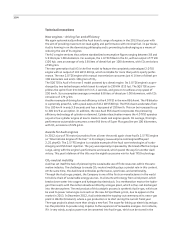 151
151 -
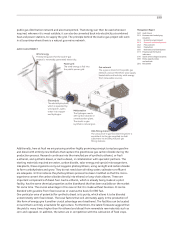 152
152 -
 153
153 -
 154
154 -
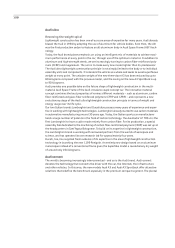 155
155 -
 156
156 -
 157
157 -
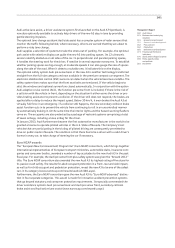 158
158 -
 159
159 -
 160
160 -
 161
161 -
 162
162 -
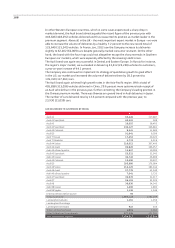 163
163 -
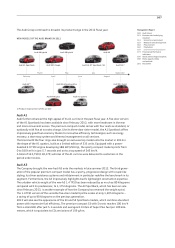 164
164 -
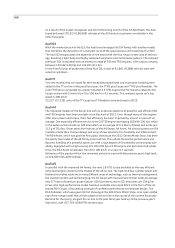 165
165 -
 166
166 -
 167
167 -
 168
168 -
 169
169 -
 170
170 -
 171
171 -
 172
172 -
 173
173 -
 174
174 -
 175
175 -
 176
176 -
 177
177 -
 178
178 -
 179
179 -
 180
180 -
 181
181 -
 182
182 -
 183
183 -
 184
184 -
 185
185 -
 186
186 -
 187
187 -
 188
188 -
 189
189 -
 190
190 -
 191
191 -
 192
192 -
 193
193 -
 194
194 -
 195
195 -
 196
196 -
 197
197 -
 198
198 -
 199
199 -
 200
200 -
 201
201 -
 202
202 -
 203
203 -
 204
204 -
 205
205 -
 206
206 -
 207
207 -
 208
208 -
 209
209 -
 210
210 -
 211
211 -
 212
212 -
 213
213 -
 214
214 -
 215
215 -
 216
216 -
 217
217 -
 218
218 -
 219
219 -
 220
220 -
 221
221 -
 222
222 -
 223
223 -
 224
224 -
 225
225 -
 226
226 -
 227
227 -
 228
228 -
 229
229 -
 230
230 -
 231
231 -
 232
232 -
 233
233 -
 234
234 -
 235
235 -
 236
236 -
 237
237 -
 238
238 -
 239
239 -
 240
240 -
 241
241 -
 242
242 -
 243
243 -
 244
244 -
 245
245 -
 246
246 -
 247
247 -
 248
248 -
 249
249 -
 250
250 -
 251
251 -
 252
252 -
 253
253 -
 254
254 -
 255
255 -
 256
256 -
 257
257 -
 258
258 -
 259
259 -
 260
260 -
 261
261 -
 262
262 -
 263
263 -
 264
264 -
 265
265 -
 266
266 -
 267
267 -
 268
268 -
 269
269 -
 270
270 -
 271
271 -
 272
272 -
 273
273 -
 274
274 -
 275
275 -
 276
276 -
 277
277 -
 278
278 -
 279
279 -
 280
280 -
 281
281 -
 282
282 -
 283
283 -
 284
284 -
 285
285
 |
 |

158
Audi ultra
Reversing the weight spiral
Lightweight construction has been one of our core areas of expertise for many years. Audi already
blazed the trail in 1994 by adopting the use of aluminum for vehicle bodies. Even then, the A8
was the first production sedan to feature an all-aluminum body in Audi Space Frame (ASF) tech-
nology.
Today, the Audi brand places emphasis on using an intelligent mix of materials to achieve maxi-
mum performance at every point in the car, through use of the optimum material. In addition to
aluminum and high-strength steels, we are increasingly turning to carbon fiber-reinforced poly-
mers (CFRP) and magnesium. The aim is to make every new model lighter than its predecessor.
The Audi ultra lightweight construction principle is not simply limited to the body or to individual
assembly units and components. It considers the vehicle as a whole and seeks to avoid superfluous
weight at every point. The unladen weight of the new three-door A3 has been reduced by up to
80 kilograms compared with the previous model, and the saving on the new A3 Sportback is up
to 90 kilograms.
Audi provides one possible take on the future shape of lightweight construction in the multi-
material Audi Space Frame of the Audi crosslane coupé concept car. The innovative material
concept combines the best properties of various different materials – such as aluminum, carbon
fiber-reinforced and glass fiber-reinforced polymers (CFRP and GFRP) – and represents a new
evolutionary stage of the Audi ultra lightweight construction principle in terms of weight and
energy usage over its life cycle.
Our two Italian brands Lamborghini and Ducati also possess many years of experience and exper-
tise in working with lightweight technologies. Lamborghini already started to use carbon materials
in automotive manufacturing around 30 years ago. Today, the Italian sports car manufacturer
holds a large number of patents in the field of carbon technology. The Aventador LP 700-4 is the
first Lamborghini to have a cabin made entirely from carbon fiber. For its production, a special
assembly hall dedicated to the machining of carbon fiber-reinforced polymers (CFRP) was set up at
the headquarters in Sant’Agata Bolognese. To build on its expertise in lightweight construction,
the Lamborghini brand is working with renowned partners from the worlds of aerospace and
science, and has operated its own research lab for approximately four years.
Ducati, too, has supplied fresh evidence of its expertise in the area of lightweight construction
technology in launching the new 1199 Panigale. An entirely new design based on an aluminum
monocoque instead of a conventional frame gives the Superbike model a revolutionary dry weight
of around only 164 kilograms.
Audi connect
The world is becoming increasingly interconnected – and so is the Audi brand. Audi connect
denotes the technology that connects the driver with the car, the Internet, the infrastructure
and other vehicles. In this area, the new models Audi A3 and Audi A3 Sportback offer attractive
solutions that redefine the benchmark especially in the premium compact segment. The pivotal
